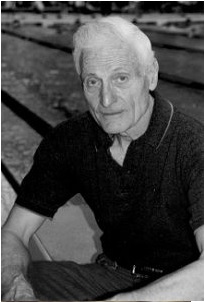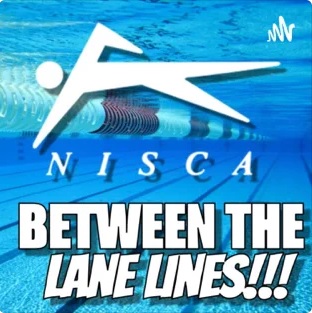What does a coach do to bring a new swimmer to his program from a rough stone to a polished gem? This is what the high school and university coach attempts to do during each athlete’s time at their school. Steve Bultman is the very successful women’s coach at Texas A&M University. He has been the architect of their improvement to one of the college powerhouses in women’s swimming. Steve’s first of two presentations dealt with moving a swimmer from average to the elite level.
Steve emphasized that it takes time and that it is not an easy road. There will be setbacks along the way and not just in the pool. He gradually starts building a foundation. This includes aerobic fitness, fitter and stronger, and major input into proper technique. The number of practices and the intensity of practices is gradually increased. He wants to avoid burying or injuring swimmers by overdoing early workouts.
Steve believes in having the coaches on deck and moving around to communicate with all swimmers. He believes in individual attention for each swimmer. Coaches must provide feedback to the swimmer both good and bad.
Kicking is very important in his program. He works the kicking in all four strokes. A swimmer may develop and change her major stroke during their school career. His swimmers do 1200 to 3000 yards of kicking in each practice. They kick some with fins, mono fins, underwater, and cross pool. Some kick sets are interspersed with a fast 25 kicking underwater with a fly kick.
Stroke drills receive a major part of his program. There is constant feedback. Swimmers also watch themselves on video as well as great swimmers. Starts, turns, finishes, and relay starts are practiced throughout the season. Emphasis is always on doing these skills correctly and legally in practice. They teach strategy and pace. He tries to find out what works best for each swimmer, negative split or out fast. The more you work with someone, the better you know them.
Each succeeding year, you can give them a little more work. Young women in college swimming need to progressively do things a little more each year. More practices and swim the yardage faster and at faster send off times. Strive always for improved technique. Train swimmers like you want them to race. Become better in the dry land and weights. Improve your nutrition and mental aspect for the sport.
Swimmers have to believe in themselves. Believe that things are possible. The coach shows them what they are capable of doing. Show them how to handle big meets and fast competition. Emphasize controlling nervousness, staying positive, and mental toughness. Don’t compare yourself to another swimmer, focus on your self and have fun. This is important to have fun and enjoy the process of training and racing. Steve likes to race in season competition a little tired.
Teach your swimmers to take ownership of their swimming. Practices can’t be something that you have to do, rather it must be something that you want to do in order to get better. Your mind can be your worst enemy or your greatest ally.
Steve Bultman’s second presentation was on backstroke. He has had great success both as a club coach and college coach with his backstroke swimmers. I first noticed Steve at national senior championships with exceptional backstroke swimmers. In 1988 he was a USA coach at the Seoul Olympics with two backstroke swimmers on the Olympic team . Steve and I were roommates in the Olympic Village where I served as a manager.
He pointed out that it is much more possible to communicate with backstroke swimmers with their faces out of the water and having the ability to see you. Steve always keeps the backstroke flags in proper position in his training sessions. The backstroke swimmers need to know how many strokes to the wall. They must be able to turn to either side.
The backstroke swimmer should work on the underwater fly kick and flutter kick on their back. Flutter kick with a board is not the same thing. Keep the head still and back. Recover straight up with the thumb exiting first. The entry is little finger first. The little fingers go right down into the pull. There should be no pause or hesitation here.
Steve believes there should be some down, up, and down pull pattern with the elbows bending on the pull. Some problems to look for would include over reaching, too shallow on entry, too little or no roll of the hips and shoulders, and not rolling soon enough.
The drills that Steve uses include all of the one arm drills including alternating one arm cycles that complete the arm pull at the side before the other arm begins to stroke. Body roll which is kicking with the arms at your side for 8 kicks and roll to the other side, changeover which is similar to body roll except that one arm is extended in the water and the other is at your side, and after 8 kicks pull and changeover to the other side. He sometimes uses spin drill and double arm and one arm swims pulling on the lane rope.
Steve also uses a one arm splash drill. This is a drill where the swimmer breaks the water surface with the fingertips at about mid stroke. This enables the elbow bend within the pull and facilitates some up sweep. He also does variable number drills such as three strokes right arm, then three strokes left arm. The variable number drills will vary in whatever manner the coach may direct.
On backstroke starts, push with your arms, head back, then push with your legs against the wall, and don’t pull up so much on the set position. Push with the legs after pushing with the arms. Get the upper body back before the leg push. Arch the back on entry and arch up for the breakout.
On turns, take the pull allowed on the side and also the one allowed on the stomach into the wall. Get over quick once the rurn is started. Maintain or build swimming momentum going into the wall and be able to turn to either side. Use a very fast and quick fly kick after the push off the wall. Start the first pull underwater on the breakout. Determine how many kicks off each wall. Go beyond that number on some sets.
Finish with either hand. Put your head back slightly under the water, but not looking at the wall, and touch the wall with your fingertips. The backstroke swimmers sometimes pull with a tube and pull buoy. Fins and mono fins are used.
Steve likes to 8 to 10 X 50 in back drills before going into a backstroke training set. He also like to do sets such as 12 X 125 with the last 25 in fast kicking.


